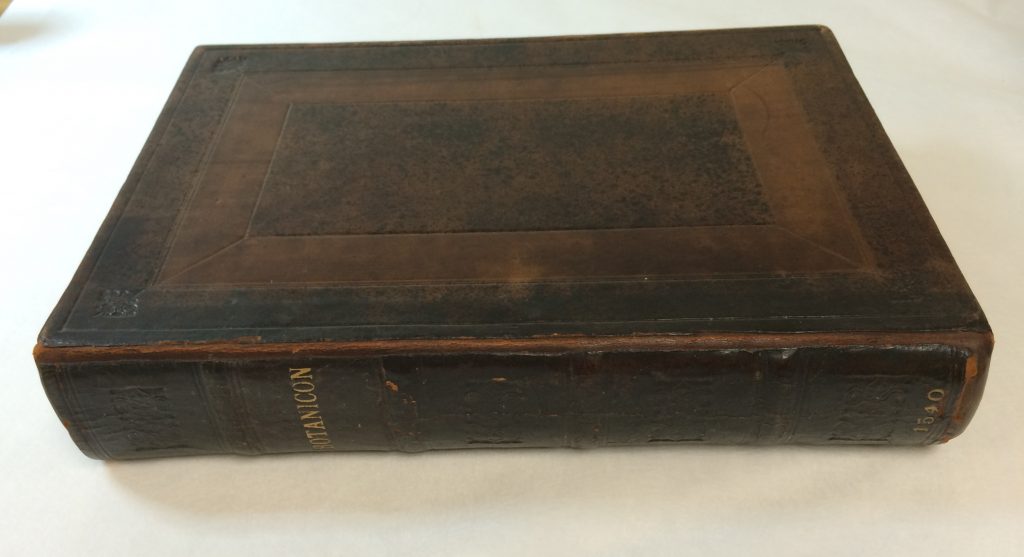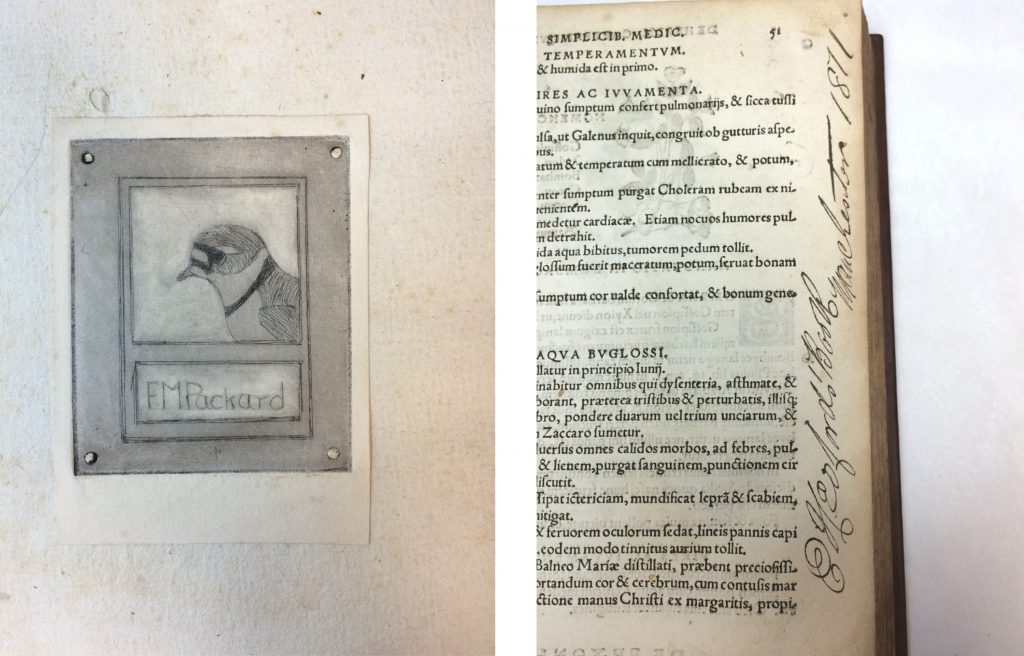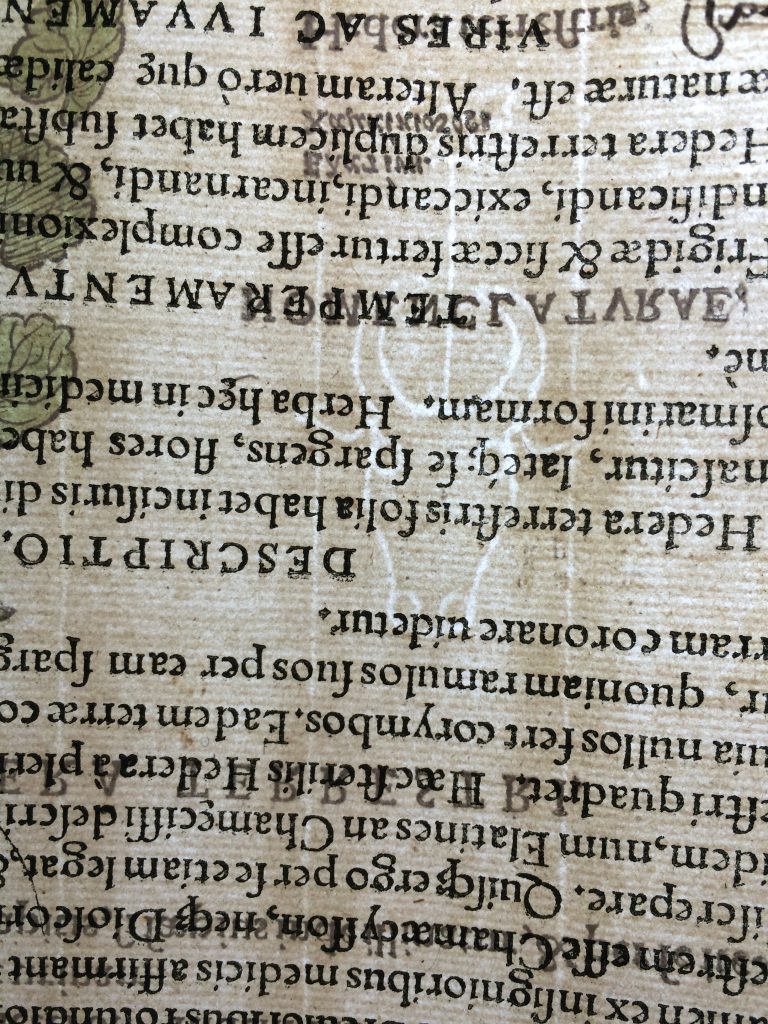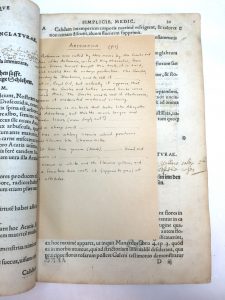When a book arrives in the Conservation Lab the first order of business is often detective work. The binding is examined to determine if it is original to the book, the paper is analyzed for clues to its origin, and scraps of paper or other ephemera enlighten us as to the provenance of the book. Recently, a particularly intriguing volume, Botanicon, came to us from the Joseph F. Cullman 3rd Library of Natural History.
Botanicon is an example of an herbal, a book popular in Germany in the 16th century. Herbals describe various plants in detail, including information about their medicinal properties. Plants were used to treat every conceivable medical condition. As a result, herbals received heavy use and their condition reflects that use with stained and torn pages.

The binding on Botanicon is blind tooled and has gold lettering on the spine with the title and publication year. The binding has been repaired at some point in the past because there is new leather under the spine. The style of the binding is also more modern than the publication year of 1540, suggesting that the volume was re-bound.

Further indication that the textblock was re-bound is found when looking closely at the marginalia. Text is cut off indicating the book was trimmed prior to re-binding. Sadly, the practice of trimming was common and causes the loss of valuable information, sometimes even cutting off text!

Previous owners are identified by bookplates or signatures. In the case of Fred .M. Packard his bookplate (above left) graces the front pastedown and his business card was also found in the binding. His wife, Jean R. Packard, donated the book to the Smithsonian Libraries. Another former owner, E. Hesford, signed the book (above right) directly in the margins even giving us a place name, Winchester, and date, 1871.

The paper that the book is printed on gives us additional information as to its origins. The paper is handmade with chain lines visible when you hold the page up to the light. Also clearly visible is a watermark of a bull’s head with a flower above the head. Watermarks, still used by fine paper makers, are individual designs of the paper maker that are imprinted into the paper at the time of production. We consulted reference books contain images of historic watermarks and found that this particular watermark is typical of German marks of the mid 16th century.

Further proof of the popularity of this volume through the ages is the sheer number of pages translated and inserted into the text. The translations are handwritten in ink and pencil and even typed.
The information we discover about a book when it comes into the conservation lab informs the treatments we carry out. In the case of Botanicon, Japanese paper, sympathetic to the weight and color of the original paper, will be used to repair tears and areas of loss. The leather binding is in good condition and requires no further treatment. The ephemera found in the volume will be placed in Mylar L-sleeves to form a barrier between it and the original text, limiting the migration of acids from modern wood pulp papers. Finally, a box will be created to house the volume and the ephemera so that the information will remain together.

One Comment
nice.